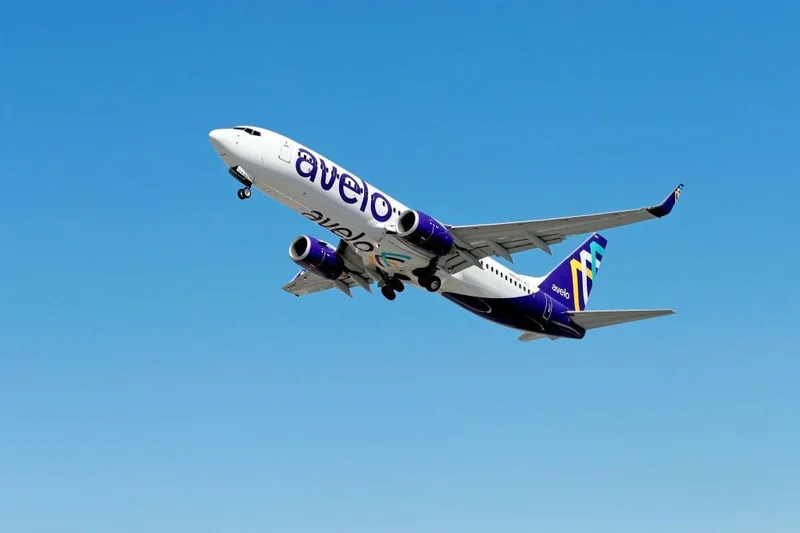Generated Title: Avelo's Coast-to-Coast Dream: Can This Low-Cost Carrier Really Pull It Off?
Avelo Airlines, the Houston-based budget carrier, has some ambitious plans. They're consolidating their network on the East Coast until mid-2027, then planning a big expansion, including a return to the West Coast. The linchpin? Embraer E195-E2 aircraft, with an order of 50 planes slated for delivery starting in 2027. It's a classic growth story, but let's dig into the numbers and see if the math actually checks out.
East Coast Focus: A Smart Move or a Holding Pattern?
Avelo's strategy to consolidate on the East Coast makes sense, at least on paper. They're pulling back from their West Coast operations (Burbank being the most notable departure) and focusing on "secondary East Coast airports." The rationale is brand awareness. As Avelo’s director of network planning, Mike Corcoran, put it, "our number one inhibitor to growth right now is just the fact that a lot of people don’t know that we actually exist." Makes sense. But is focusing on smaller airports the most efficient way to build brand recognition?
The plan involves using their existing fleet of 14 Boeing 737-800s and eight 737-700s to scale up operations at these smaller airports. They want more destinations from fewer cities, betting that increased frequency will translate to increased awareness. Okay, but what about load factors? Are those flights actually full, or are they just adding capacity to say they have more routes? Details on load factors, crucially, are missing. This is the part of the report that I find genuinely puzzling – wouldn't that be the first metric you'd want to highlight?
Avelo is also adding new routes from Wilmington Airport, specifically to Atlanta and Chicago, starting in early 2026. These routes will operate four to five times a week, responding to customer demand for more options. Avelo’s communications manager, Courtney Goff, noted that the addition of a third aircraft at Wilmington created the opportunity for these new destinations. All well and good, but how do these new routes fit into the overall consolidation strategy? Are they diluting the focus, or are they genuinely synergistic?
The E195-E2: A Game Changer or a Risky Bet?
The real gamble here is the Embraer E195-E2. Avelo has ordered 50 of these aircraft, with deliveries expected to begin in mid-2027 at a rate of about one per month for five years. Corcoran mentioned a target configuration of around 140 seats and the possibility of a dual-class configuration. These planes are supposed to enable Avelo to efficiently serve the West Coast again, connecting both coasts in a "smarter, more effective way." Avelo Airlines To Consolidate Network Ahead Of E2 Deliveries
But here's the rub: 2027 is a long way off. A lot can change in the airline industry in that time. Fuel prices could spike (again). The economy could tank. A new, even more disruptive low-cost carrier could emerge. And, perhaps more importantly, can Avelo survive until 2027 without significant losses? The airline industry is littered with the corpses of airlines that bet big on future growth and didn't make it.

The plan hinges on the E195-E2's efficiency. Avelo believes it will allow them to profitably serve thinner routes and connect disparate markets. They’ve identified 20 potential airports for these aircraft, all secondary airports near major metropolitan areas. The idea is sound, but execution is everything. And, as always, it comes down to cost. How much will it actually cost to operate these E2s, and what kind of fares will Avelo need to charge to break even?
It's worth remembering that Avelo got into hot water with some groups for its agreement with ICE to operate deportation flights, starting in April 2025. UConn, for example, faced pressure to end its marketing partnership with the airline because of this. It's hard to quantify the impact of this kind of negative PR, but it certainly doesn't help with brand awareness. UConn continues marketing partnership with ICE-affiliated Avelo Airline
Can Avelo Really Take Off?
Avelo's plan isn't bad, per se. It's a standard low-cost carrier playbook: find underserved markets, offer low fares, and hope to stimulate demand. But the airline industry is brutally competitive, and success requires more than just a good plan. It requires flawless execution, a bit of luck, and, above all, a relentless focus on costs.
Avelo is aiming for a 140-seat configuration on the E195-E2. (They're also considering a dual-class setup, which is interesting.) This is where things get dicey. Can they really fill those seats consistently, especially on routes to secondary airports? The data isn't there to say definitively, but I'm skeptical.
Brand Awareness or Brand Overstretch?
It all boils down to this: is Avelo's focus on brand awareness a genuine strategy for sustainable growth, or is it a smokescreen for a lack of profitability? Consolidating on the East Coast and waiting for the E195-E2s to arrive feels like a holding pattern. They're essentially treading water until the new planes show up, hoping that they'll be able to magically transform the airline's fortunes.
